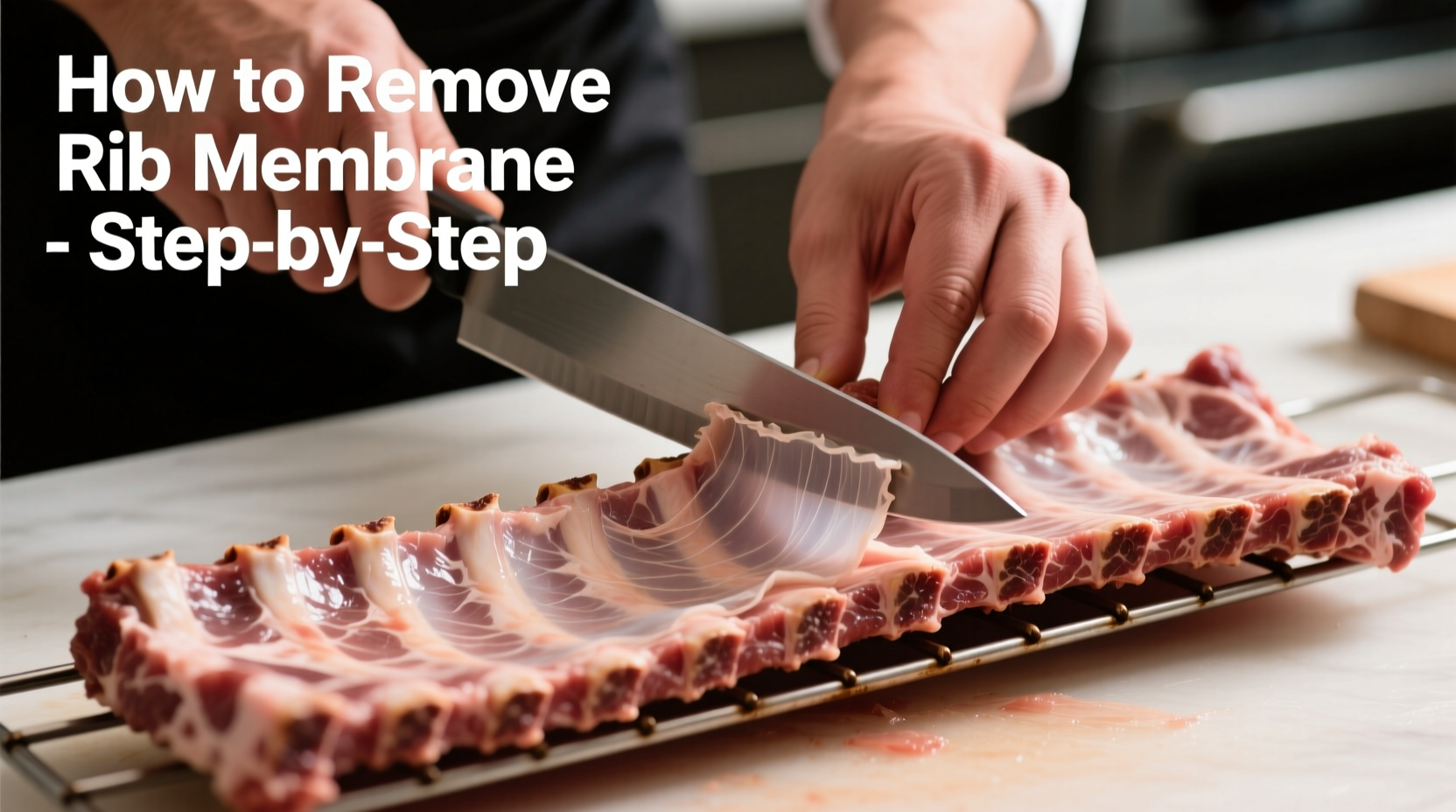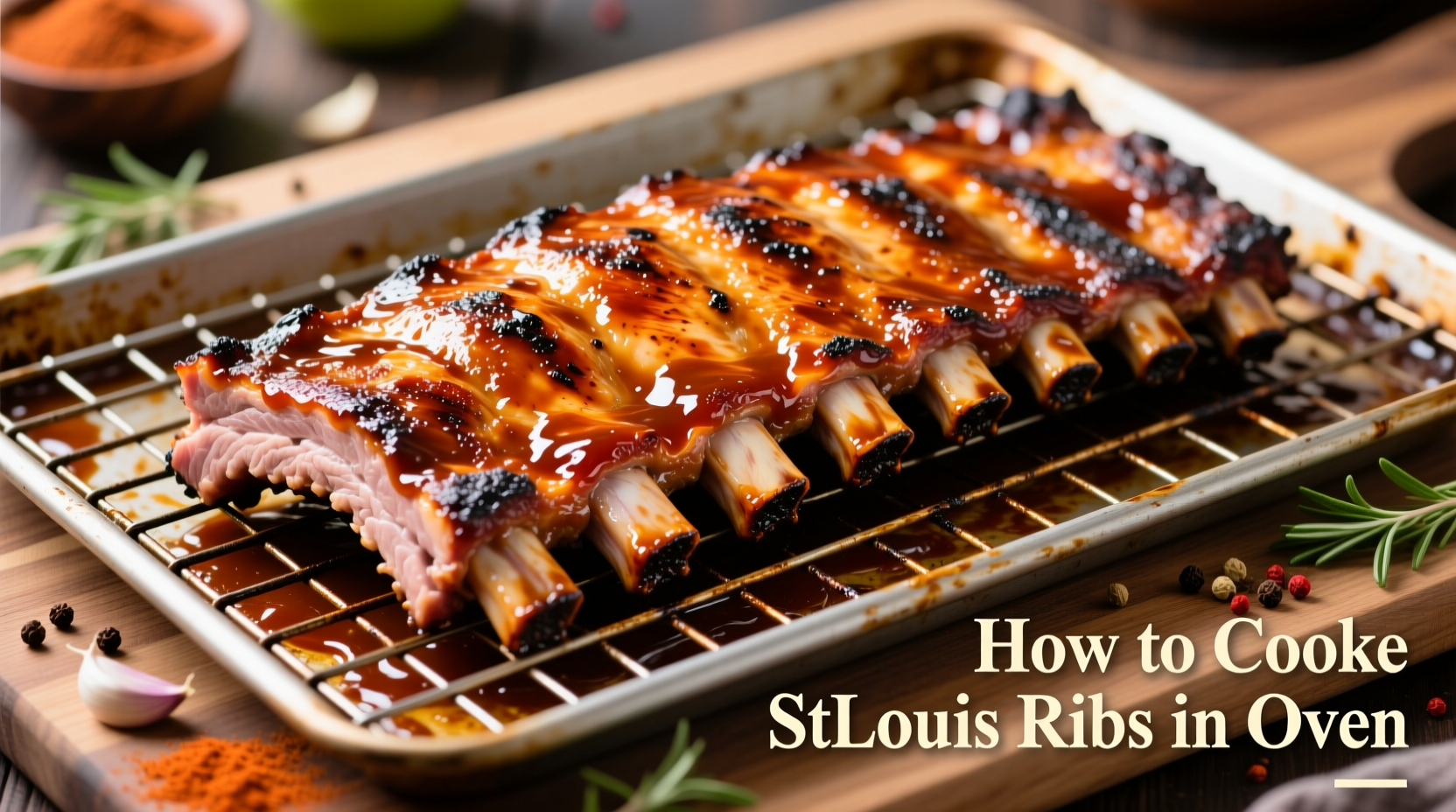Why Oven-Cooked St. Louis Ribs Deserve Your Attention
When you're craving restaurant-quality ribs without specialized equipment, your oven becomes the most reliable tool in your kitchen. St. Louis cut ribs—rectangular, meaty, and uniformly shaped—respond exceptionally well to controlled oven environments. Unlike baby backs that cook faster but dry out easily, these pork ribs maintain moisture through extended low-temperature cooking while developing that signature tender texture home cooks seek.
Understanding St. Louis Cut Ribs
Before you start cooking, recognize what makes St. Louis ribs unique. Butchers trim spare ribs to create this rectangular cut by removing the sternum bone, cartilage, and rib tips. The result? Consistent thickness that cooks evenly in your oven—a critical advantage over irregular baby back ribs when using precise temperature control.
| Rib Type | Shape | Fat Content | Best Cooking Method |
|---|---|---|---|
| St. Louis Cut | Rectangular, uniform | Higher marbling | Oven, grill, smoker |
| Baby Back | Curved, tapered | Leaner | Grill, faster methods |
Essential Tools for Oven Success
You don't need specialty equipment for perfect oven ribs. Verify these items before starting:
- Heavy-duty rimmed baking sheet (18×13 inches)
- Meat thermometer (instant-read recommended)
- Aluminum foil (heavy-duty)
- Rack that fits inside baking sheet
- Butcher's twine (for securing bundles)
Step-by-Step Oven Rib Preparation
Prep Work: 20 Minutes That Make the Difference
Start with 2-3 pounds of St. Louis ribs (one full rack typically weighs 2½-3 lbs). The critical step? Removing the membrane. Slide a butter knife under the thin membrane covering the bone side, lift gently, then grip with paper towel and peel off completely. This allows seasoning penetration and prevents shrinkage during cooking.

Dry Rub Application Technique
Apply 3 tablespoons of dry rub per rack, pressing firmly into all surfaces. Let sit uncovered in refrigerator for minimum 1 hour (overnight preferred). This dry brine process enhances flavor penetration and creates better texture. For authentic Kansas City-style flavor, use this balanced rub:
- 2 tbsp brown sugar
- 1 tbsp paprika
- 1½ tsp garlic powder
- 1½ tsp onion powder
- 1 tsp black pepper
- ½ tsp cayenne (optional)
- ½ tsp salt
Cooking Timeline and Temperature Control
Follow this precise oven rib cooking schedule for foolproof results:
- 0-150 minutes: 275°F oven, ribs bone-side down on rack over baking sheet
- 150 minutes: Internal temperature should reach 160°F (USDA minimum safe temperature is 145°F with 3-minute rest, but ribs require higher temp for tenderness)
- 150-180 minutes: Wrap tightly in foil with 1/4 cup apple juice or broth, return to oven
- 180-210 minutes: Unwrap, apply sauce, broil 5 minutes for caramelization
Avoiding Common Oven Rib Mistakes
Even experienced cooks make these errors when learning how to cook St Louis ribs in oven:
- Skipping membrane removal: Causes ribs to contract and become tough
- Overcrowding the pan: Prevents proper air circulation and steams instead of roasts
- Opening oven frequently: Temperature fluctuations extend cooking time by 20-30 minutes
- Using sugary sauces too early: Burns during long cooking phases
When Oven Cooking Shines (and When It Doesn't)
This method works best when:
- You need consistent results regardless of weather conditions
- Cooking for 4 or fewer people (ovens handle smaller quantities better than smokers)
- Seeking hands-off cooking (set timer, minimal monitoring required)
Avoid oven method when:
- Cooking more than 3 racks simultaneously (requires multiple ovens)
- Seeking authentic smoke flavor (add liquid smoke to braising liquid as compromise)
- Outdoor cooking is possible and preferred for flavor development
Food Safety Verification Points
According to USDA Food Safety and Inspection Service guidelines, pork ribs reach safe consumption at 145°F with 3-minute rest. However, for tender ribs, continue cooking to 195-203°F internal temperature where collagen fully converts to gelatin. Always verify with a calibrated thermometer—never rely solely on time estimates. Keep raw and cooked meats separate during preparation to prevent cross-contamination (USDA FSIS).
Serving and Storage Guidelines
Rest ribs 15 minutes after cooking—this critical step allows juices to redistribute. Cut between bones with sharp knife for clean presentation. Store leftovers in airtight container for up to 4 days. Reheat gently at 250°F with damp paper towel to prevent drying. Freeze cooked ribs for up to 3 months—thaw in refrigerator before reheating.
Perfecting Your Oven Rib Technique
Master these advanced adjustments for consistently excellent results:
- Temperature variance: If your oven runs hot/cold, adjust by 15°F and monitor with separate oven thermometer
- Thicker racks: Add 20-30 minutes to initial cooking phase before wrapping
- Leaner cuts: Increase braising liquid by 25% to compensate for lower fat content
- Convection ovens: Reduce temperature by 25°F and check 15 minutes early











 浙公网安备
33010002000092号
浙公网安备
33010002000092号 浙B2-20120091-4
浙B2-20120091-4